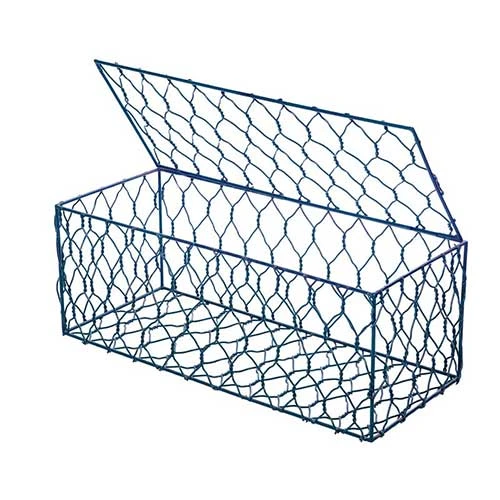-
 Phone:
Phone: -
 Email:
Email:

Exploring Rock Netting Techniques for Effective DPWH Projects and Environmental Solutions
Rock Netting A Vital Solution for Landslide Mitigation by DPWH
Landslides pose significant risks to infrastructures and human safety, particularly in mountainous and hilly regions. In the Philippines, where the Department of Public Works and Highways (DPWH) oversees numerous civil engineering projects, the effective management of landslide-prone areas is a critical responsibility. One innovative solution that has gained traction in recent years is rock netting, a method designed to enhance slope stabilization and mitigate the effects of landslides.
Understanding Rock Netting
Rock netting, often referred to as rockfall netting, is a system that employs high-tensile steel wire mesh secured to the rock face. This specialized netting acts as a barrier that contains loose rocks, preventing them from falling and causing damage below. The application of rock netting is particularly relevant in areas with steep slopes, where geological conditions can lead to the dislodgment of rocks during heavy rainfall or seismic activity.
The construction of a rock netting system involves several critical steps. First, a thorough geological survey of the site is conducted to assess potential risks and to determine the optimal location for netting installation. Following this, workers clear the area of loose debris and boulders before installing the netting itself. The net is anchored to the rock face through various mechanisms, ensuring it remains in place even under significant stress.
Applications of Rock Netting
The deployment of rock netting has proven to be effective in diverse applications. In the context of transportation infrastructure, rock netting is often placed along highways and roads that traverse mountainous terrains. By preventing rockfalls, DPWH protects not only the roadway itself but also the vehicles and personnel that rely on these crucial transport networks. This application is critical for maintaining accessibility and ensuring public safety.
In addition to its benefits for transportation, rock netting also plays a significant role in urban planning and construction. As cities expand into hilly regions, the risk of landslides increases. Implementing rock netting in construction projects helps safeguard buildings and infrastructure, thereby reducing potential financial losses and enhancing the overall safety of the urban environment. The foresight provided by rock netting contributes significantly to disaster risk reduction strategies, which are vital in a country frequently affected by natural disasters.
rock netting dpwh

Advantages of Rock Netting
The advantages of rock netting extend beyond mere rockfall prevention. Firstly, it serves as a cost-effective solution to landslide management. Compared to other stabilization methods, such as rock bolting or retaining walls, installing rock netting can be less expensive and can often be completed more rapidly. This efficiency is especially important for government projects like those overseen by the DPWH, where budget and time constraints are prevalent.
Moreover, rock netting is characterized by its minimal environmental impact. Unlike solid barriers, which can disrupt the natural landscape, rock netting allows for natural vegetation to regrow and thrive. This aspect not only supports biodiversity but also promotes natural erosion control, contributing to ecological balance in the disturbed areas.
Challenges and Future Directions
While rock netting is a proficient hazard mitigation tool, it is not without its challenges. The effectiveness of the netting can be compromised by improper installation or maintenance. For this reason, ongoing monitoring and assessment are critical to ensuring that the netting remains functional over time. DPWH has been proactive in developing frameworks to evaluate and maintain rock netting systems, emphasizing the importance of regular inspections.
Looking forward, advancements in materials technology may soon enhance the efficacy of rock netting. Innovations such as the use of synthetic fibers or biodegradable components could lead to even lighter and more durable systems. Additionally, integrating modern technology, such as drone inspections and Geographic Information Systems (GIS), can provide valuable data that inform maintenance and installation procedures.
Conclusion
As the Philippines continues to grapple with the challenges posed by landslides, rock netting emerges as an essential component of the nation's infrastructure defense strategy. The DPWH's investment in this technology not only safeguards roads and communities but also embodies a commitment to sustainable and innovative engineering practices. By prioritizing rock netting as a part of comprehensive disaster risk reduction efforts, the Philippines can enhance its resilience against natural disasters, ensuring a safer future for all citizens.
-
Wire Mesh for Every Need: A Practical SolutionNewsJul.25,2025
-
Steel Fences: Durable, Secure, and Stylish OptionsNewsJul.25,2025
-
Roll Top Fencing: A Smart Solution for Safety and SecurityNewsJul.25,2025
-
Cattle Farm Fencing Solutions for Maximum SecurityNewsJul.25,2025
-
Affordable Iron Binding Wire SolutionsNewsJul.25,2025
-
Affordable Galvanized Wire SolutionsNewsJul.25,2025
-
Wire Hanger Recycling IdeasNewsJul.25,2025








